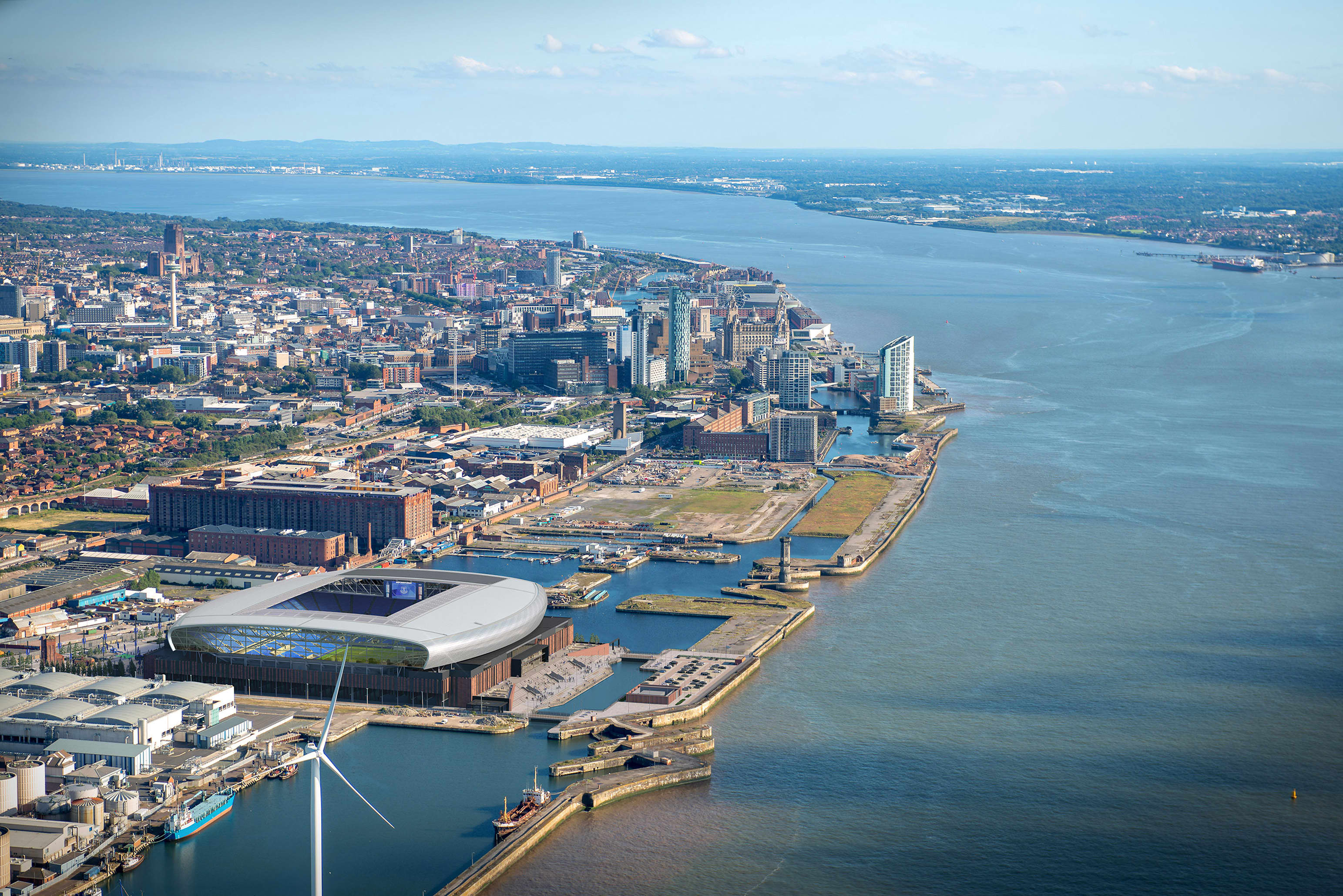Premier League’s ‘most inclusive, accessible and sustainable stadium’ wins approval

An aerial artist’s illustration of Everton’s proposed new stadium at Bramley Moore Dock, in Liverpool.
Virtual-Planit | Everton FC | Getty Images
Everton soccer club’s ambitious project to build a stadium on Liverpool’s waterfront is one step closer to becoming a reality after its planning application was unanimously approved by the local authority.
Lawmakers in the city also approved on Tuesday an outline application to redevelop the English Premier League team’s current home, Goodison Park. According to the council, the plans will together result in a total investment of £750 million (around $1.1 billion) which could in turn generate as many as 15,000 jobs.
Plans for Everton’s stadium at Bramley-Moore Dock, in the north of the city, will now be sent to Robert Jenrick, the U.K.’s secretary of state for housing, communities and local government, for approval. If Jenrick gives the green light, work could start later this year.
If built, Everton’s stadium will have a capacity of 52,888 and make use of an area that was once a hive of maritime activity, such as the export of coal.
While the main purpose of the stadium is to host soccer matches, it has also been designed to incorporate a range of features and technologies focused on energy efficiency and the environment.
In a presentation to Liverpool City Council’s planning committee, which was held virtually due to the coronavirus pandemic, Everton CEO Denise Barrett-Baxendale claimed the development would be “one of the most environmentally sustainable stadiums in the U.K.”
Real estate giant CBRE advised Everton on its application. In a statement released after the club’s application was approved, Iain Jenkinson, who heads up CBRE’s national planning and development team, said the development would be “the most inclusive, accessible and sustainable stadium in the Premier League.”
Proposals for the stadium include charging points for electric vehicles, parking space for bicycles, roof-mounted solar panels and an on-site battery storage system that would be used instead of a diesel generator.
In addition, it’s envisaged that energy efficient lighting would “incorporate automatic controls that respond to daylight and human presence” while an emphasis will also be placed on maximizing daylight within the structure and cutting unwanted heat gain.
Bramley-Moore Dock is located within a World Heritage Site and the plans for Everton’s stadium have not drawn universal praise.
Historic England, for example, has previously said plans for the development should be refused due to the harm it would cause Bramley-Moore Dock as well as the World Heritage Site as a whole.
Everton’s stadium would join a growing number of sporting arenas integrating sustainable features into their design.
In the Netherlands, for example, Ajax’s Johan Cruijff Arena gets energy from over 4,200 roof-mounted solar panels and an off-site wind turbine.
Back in the U.K., 80% of match-day waste at Arsenal’s Emirates Stadium is recycled, with all food waste diverted to an anaerobic digestion plant.




